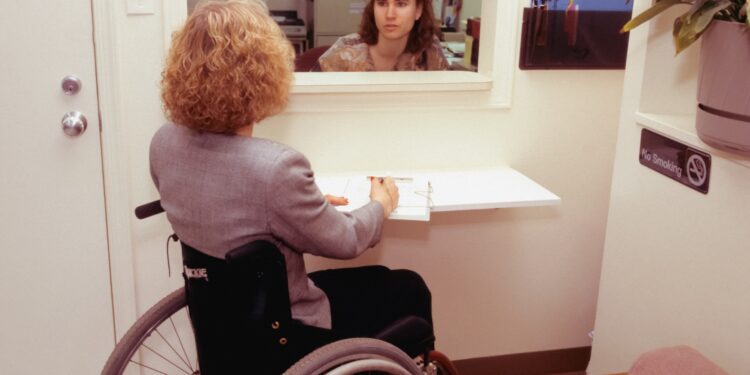Navigating the world as a disabled person is not easy, even with the ADA (Americans with Disabilities Act of 1990) compliance regulations put in place. In part, the Act is not enforced as it should be. Uneven sidewalks, broken or lack of ramps, narrow doorways and hallways are just some of the obstacles that the disabled deal with when out in the community. Another “obstacle” is unkind judgment from others who simply do not understand chronic illness, chronic pain and disability.
A friend recently posted a picture on her Facebook account of a nasty note that was left on her windshield by someone who was obviously watching and judging her as she got out of her vehicle. Because she was able to walk, this person became angry and decided to let her know it. The note read “WHERE’S YOUR WHEELCHAIR?!?!?” This friend has multiple sclerosis (MS) and has the ability to walk, but is limited. This is a big misunderstanding relating to the use of handicap spots. There are several conditions for which a person can qualify for a placard. Not everybody that is disabled has a visible disability, nor are they confined to a wheelchair.
So, who qualifies for the use of handicap spots? Each state has its own set of conditions, but typically a placard is granted if the patient suffers from or demonstrates any of the following: cannot walk 200 feet without stopping/ impaired mobility, cannot walk without the use of, or assistance from, a brace, cane, crutch, another person, prosthetic device, wheelchair or other assistive device, uses portable oxygen, heart disease/level iii or iv cardiovascular condition, legal blindness or poor vision, is an amputee/hidden prosthetics, lung disease that restricts mobility, suffers from chronic pain, loss of one or both hands/limited or no use of arms, respiratory disease, brain injuries and tumors, neurological disease, organ transplants, seizure disorders, and/or sensitivity to sunlight.
A doctor or other authorized healthcare provider, law enforcement official or a U.S. Department of Veterans Affairs Regional Office Administrator must sign a form for the patient in order to obtain the placard. An authorized health care provider is defined as a physician, chiropractor, optometrist, podiatrist, physician’s assistant, or a certified registered nurse practitioner licensed or certified to practice in the commonwealth or in a contiguous state. If the condition is permanent, the renewal period is every five years. Temporary placards are also available for patients who’ve recently undergone surgery and are typically issued for a six month period.
For those who do rely on mobility aids, concerning video that revealed wheelchair mishandling and abuse at airports has recently made major headlines. Airline employees were seen laughing and carelessly tossing chairs down the dedicated ramps-with some of the chairs ending up slamming to the ground after being airborne.
According to businessinsider.com, data from the Department of Transportation shows that in 2022, the top 10 US-based airlines lost, damaged, or destroyed 11,389 wheelchairs and scooters. Out of a total of 741,582 wheelchairs and scooters the airlines transported, that amounts to about 1.5% that were mishandled.
While that is a small percentage, every time it happens, it puts an incredible burden on the person affected. Mobility aids are expensive and so are the repairs. Additionally, medical problems such as sores and worsened neurological problems can arise from having to use a non-customized chair temporarily. For patients without the ability to walk, such as a paraplegic, it is comparable to taking a healthy person’s legs from them.
Some disability advocates have been asking for additional training, and maybe more importantly, compassion and understanding from the airline workers when handling mobility equipment. In hopes of avoiding this happening, some people have attached laminated notes with step-by-step instructions on how to use the equipment properly, also adding friendly words of appeal such as “please” and “thank you”.
The 1986 Air Carrier Access Act requires airlines to provide free wheelchair service to anyone who requests it or face hefty fines. No documentation of proof of disability is required. Advocates are suggesting a universal disability pass or card so the Act isn’t taken advantage of for what airline employees call a “miracle flight”. This is when a person requests use of a wheelchair but is later seen walking. Perhaps the employees need to be educated in the simple phrase “Not all disabilities are visible”. This is the type of thinking (or lack thereof) and judgment that led to my friend receiving that nasty note on her car windshield.















